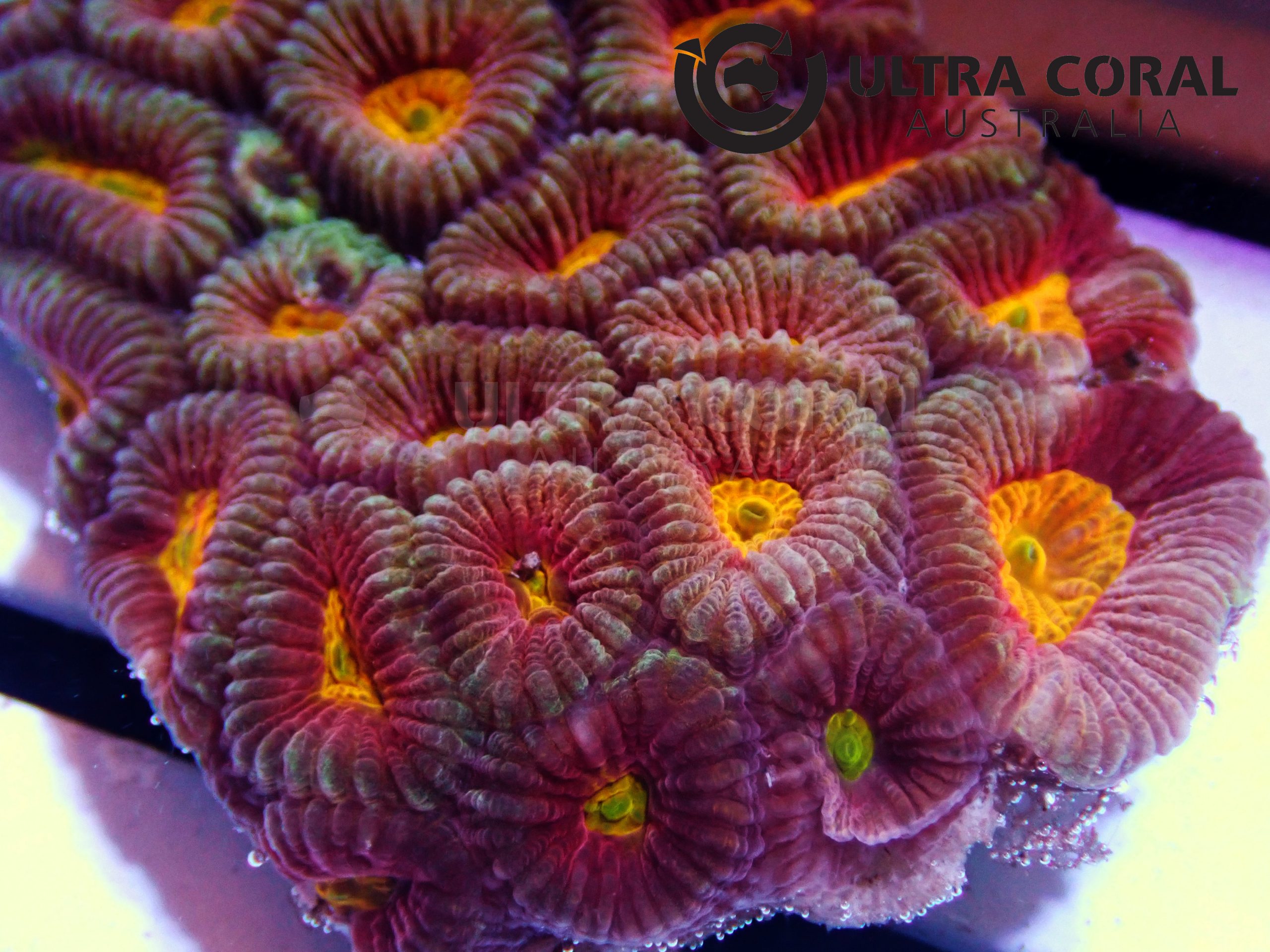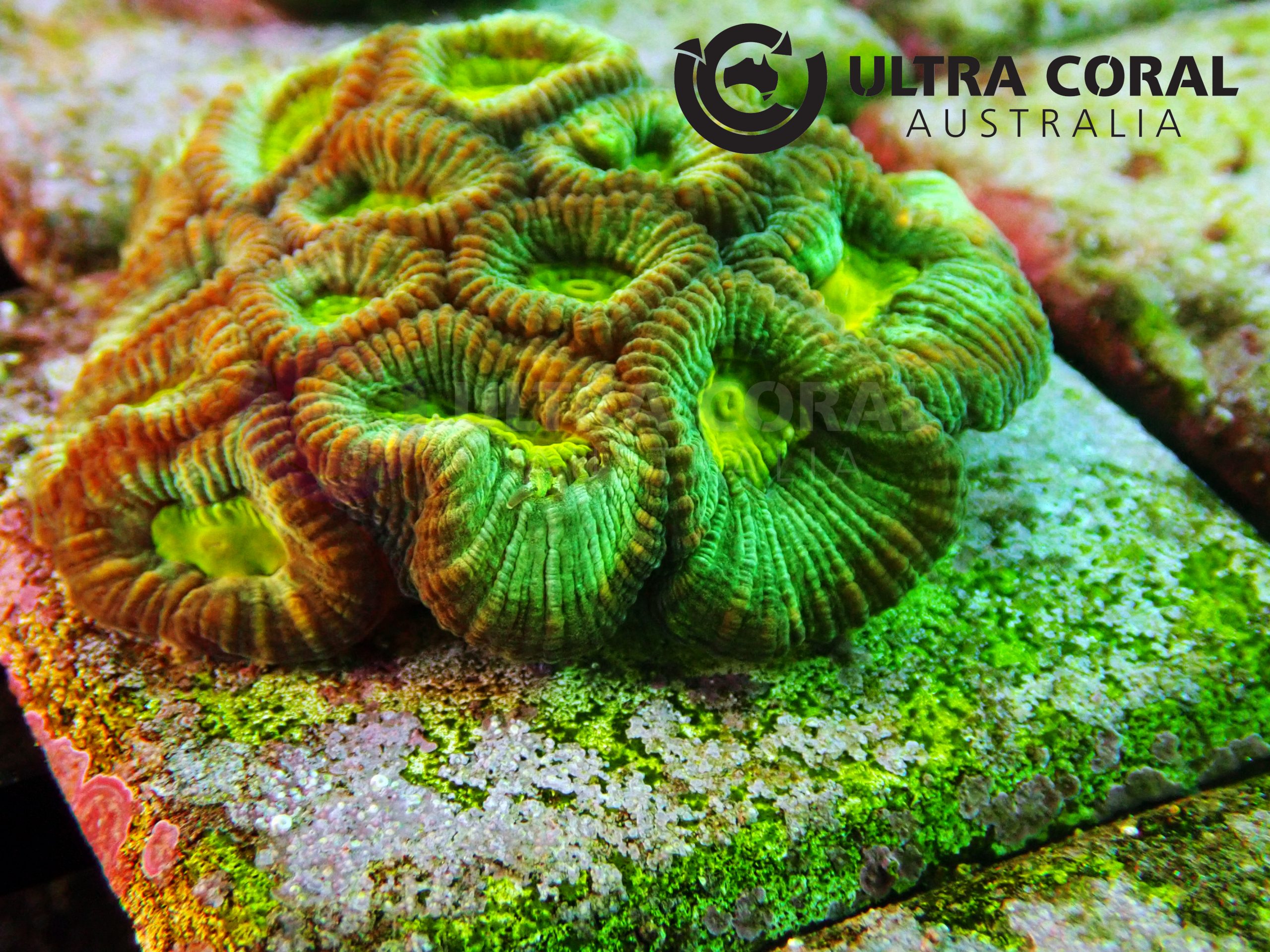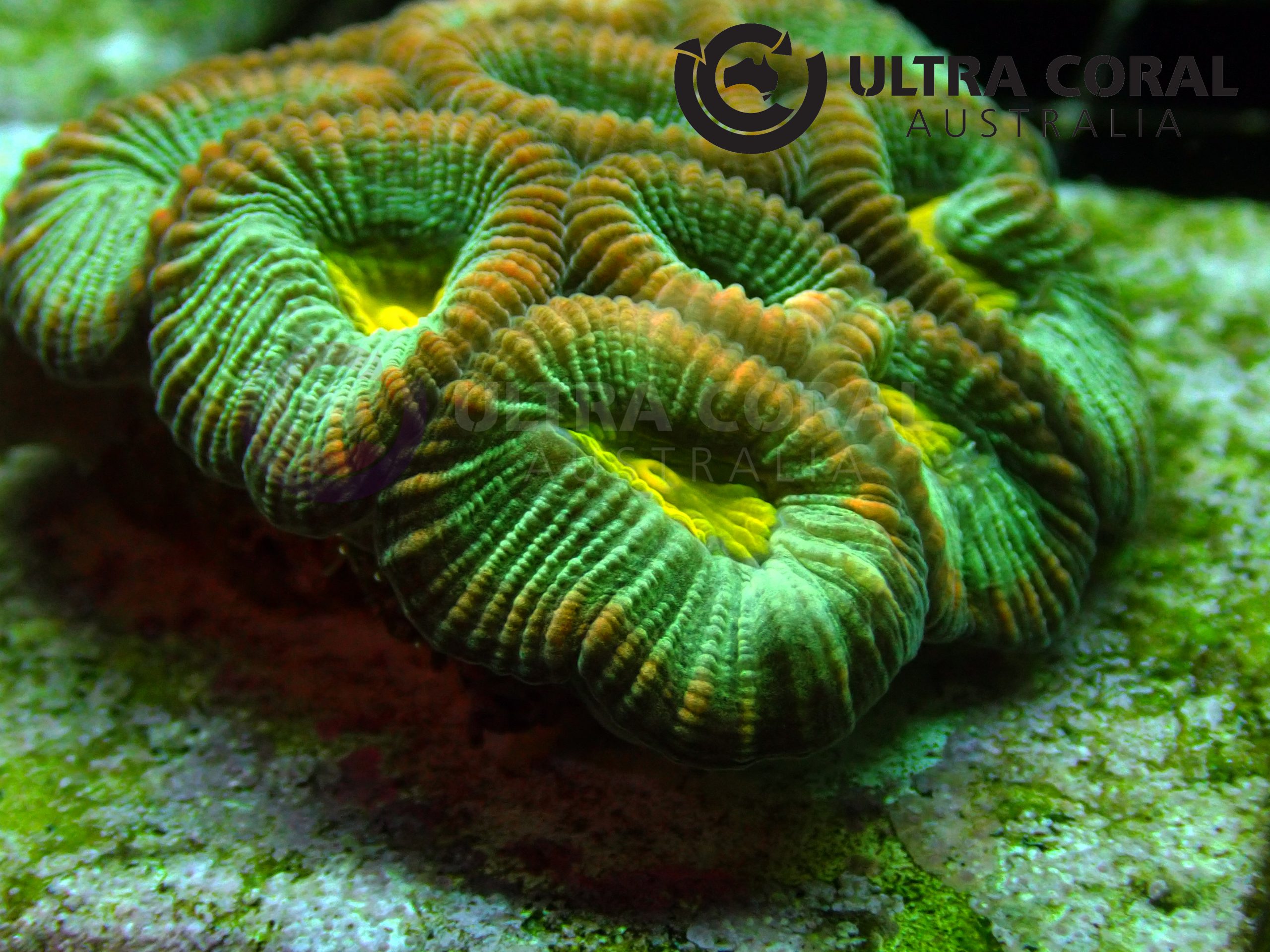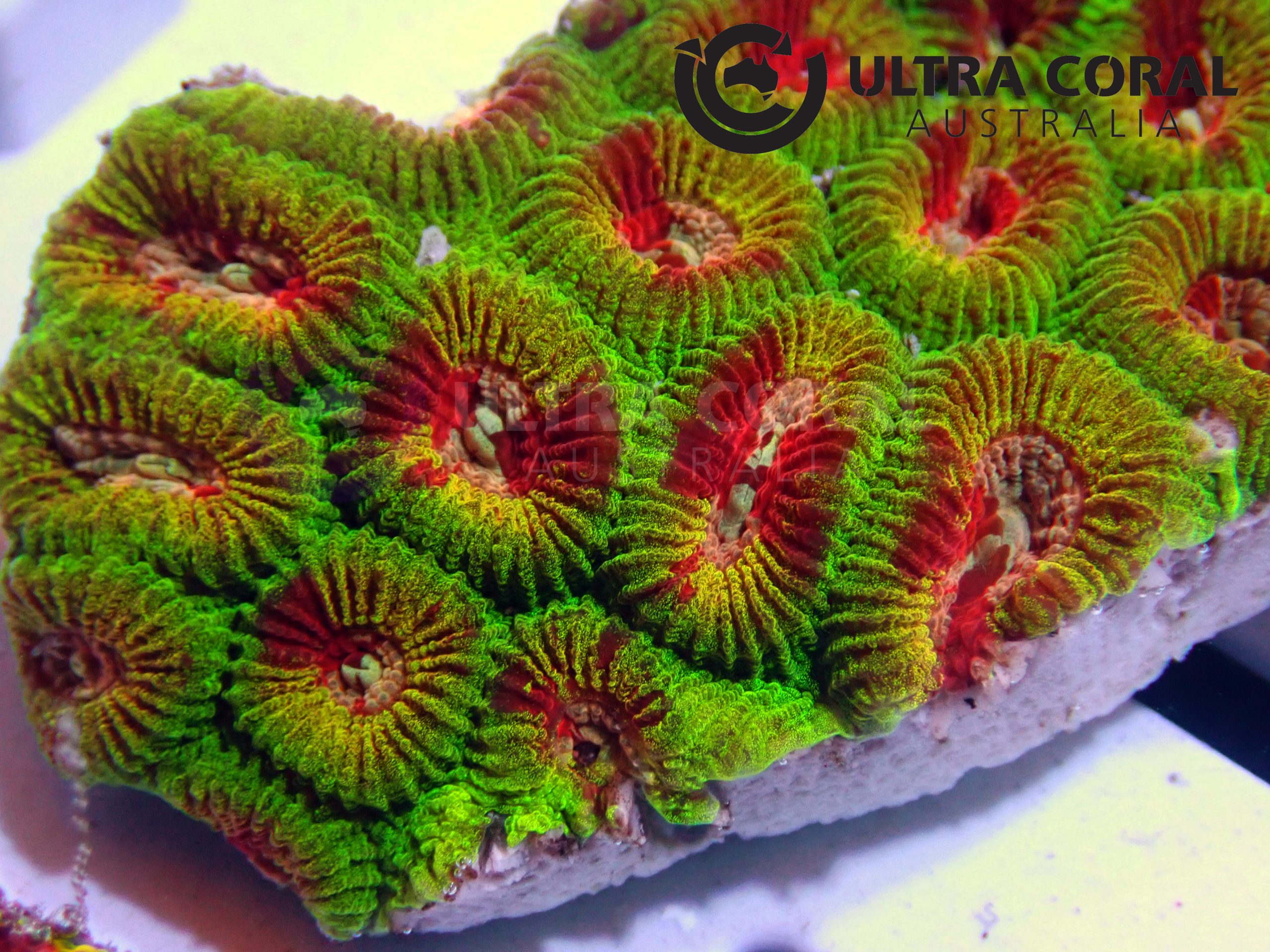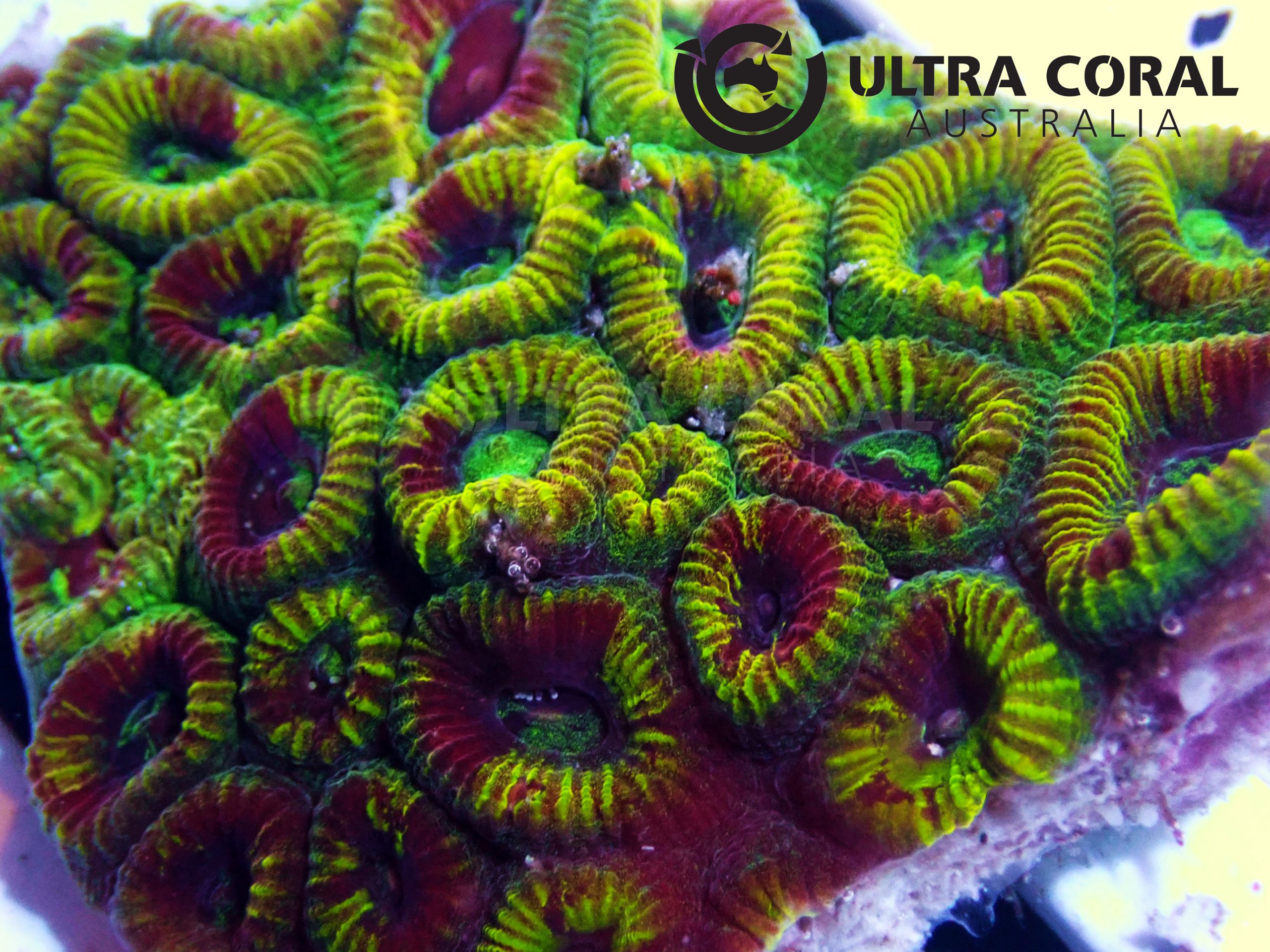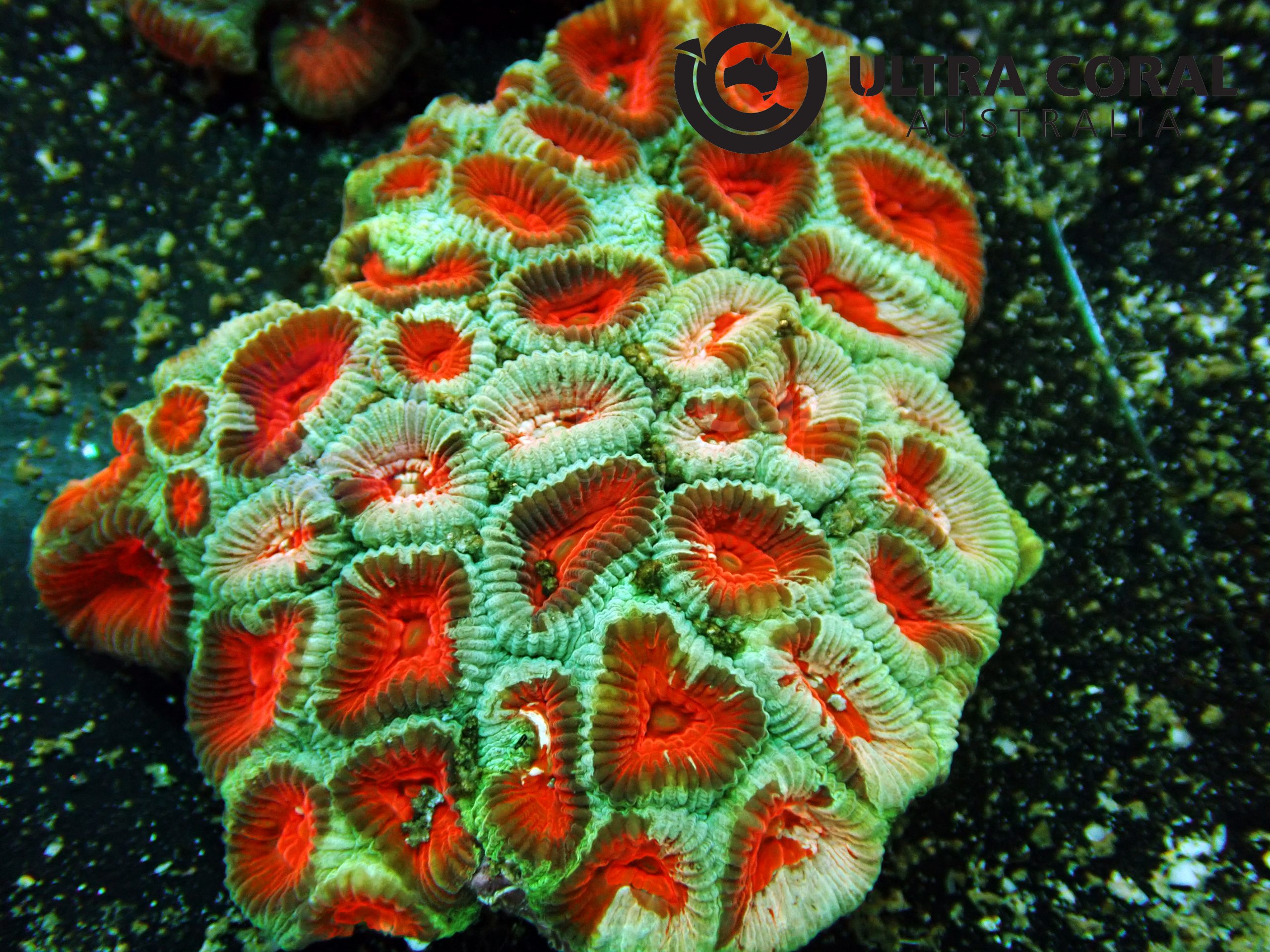Favia sp.

Corals from the Favia genus are among the most widely and uniformly distributed of all coral genera.
This large polyp stony (LPS) coral species typically forms massive and round dome shaped colonies, while occasionally forming flat or thick encrusting colonies. Common names for Favia species include ?moon coral?, ?green moon coral? and ?closed brain coral?.
The name green moon coral is derived from one of the species common appearances, with round slightly projected craterlike corallites and a green colouration. However, Favia corals show a large diversity in both form and colour, even within individuals of the same species.
Corallites can range anywhere from 8-12mm in size and are usually green, cream or brown colours, occasionally showing tones of orange and red.
Favia species are very similar to that of Favites, so much so that they share common names and are frequently mistaken for each other. Identifying Favia becomes easier when examining the corallite walls between polyps in a single colony. Individual corallites that do not share common walls are easily recognised as Favia species rather than the closely related Favites and Goniastrea species which share common walls. However, during the day the polyp?s tissue is often swollen which obscures the below skeletal structure below and leads to misidentification.
Care should be taken when placing Favia species into aquariums, due to the species? aggressive nature and ability to extend sweeper tentacles during the night.
Basic Water Parameters
pH
8.0 to 8.3
Salinity
34 - 36ppt
Temperature
24.0 - 26.0 Celsius
Husbandry Requirements
Lighiting
50-100 PAR - 110-175 PAR
Flow
Some turbulence required
Aggressiveness
Has long sweeper tentacles and/or strong stinging ability that can damage most other corals.
Acclimation Guide
- It is highly recommended to acclimate all corals to a new environment to prevent shocking corals.
- Place the corals in the water from the packing bags and slowly add the water from new environment (Dripping method is recommended).
- Use the water parameter above as a guide.
- When the vessel becomes full , replace the water with the new environment water by a small amount at a time.
- Ensure the water temperature matches with the new environment’s water.
- After the corals have spent adequate time in the acclimation water, gently place the corals to a new environment.
- It is recommended to place new corals under lower light intensity than usually required. Once corals show no signs of stress, it can be moved to higher lighting area gradually.”

